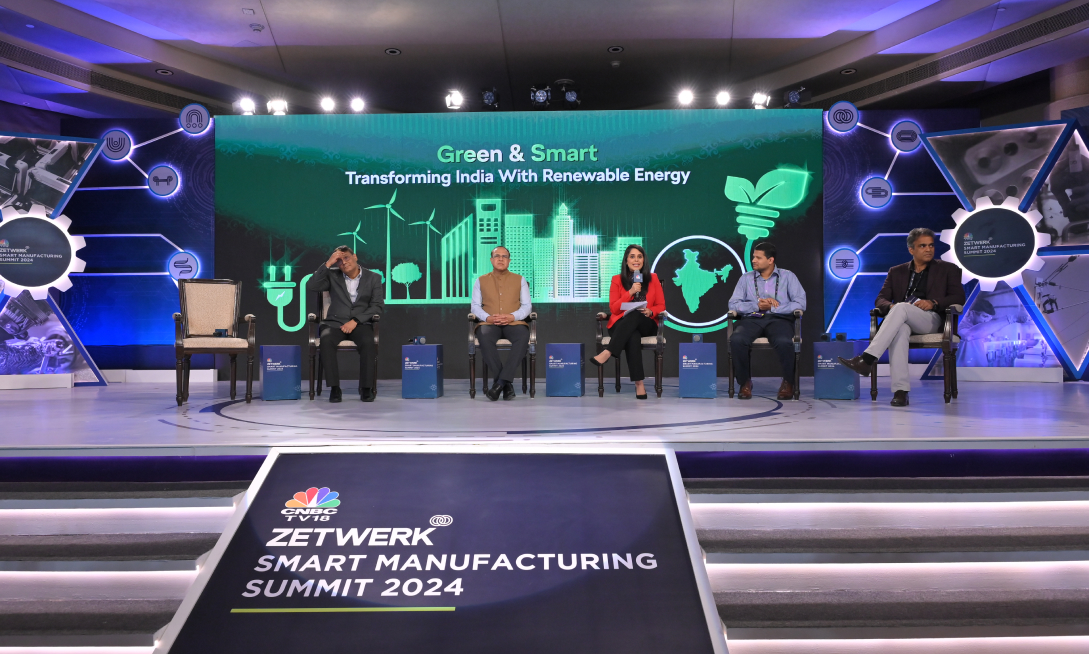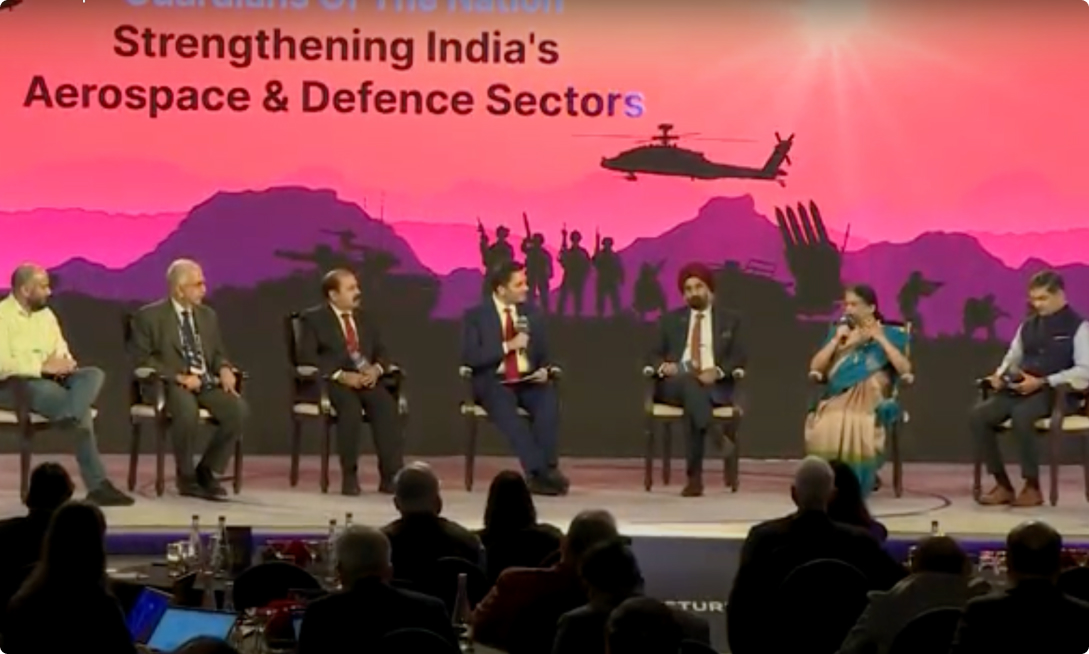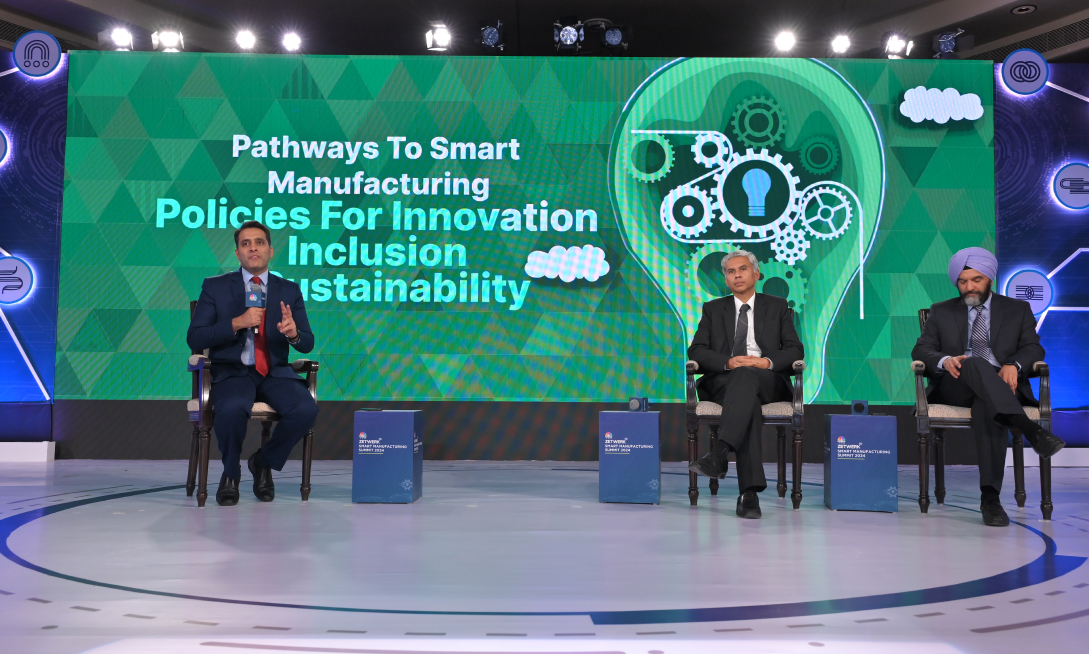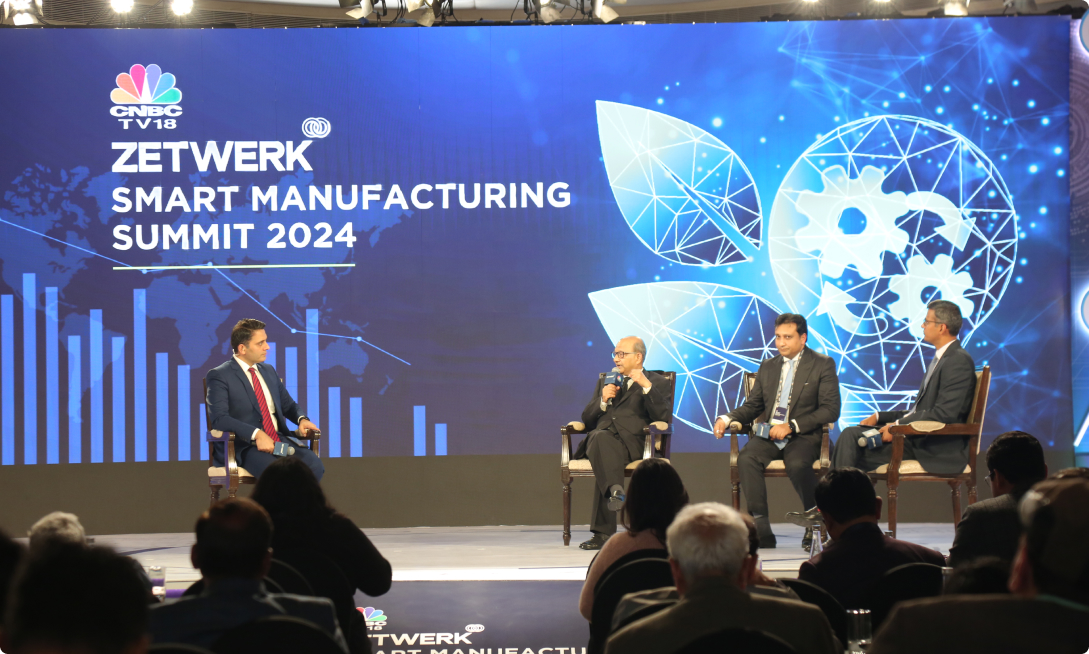India’s Renewable Energy Odyssey: Pioneering a Green Revolution Towards 500GW by 2030

Charting India’s Green Energy Trajectory: Insights from Industry Leaders
In a panel discussion on “Green & Smart Transforming India with Renewable Energy” at the ZETWERK Smart Manufacturing Summit, 2024, industry leaders came together to talk about the nuances of India’s renewable energy landscape, exploring manufacturing contributions, solar energy’s potential, the evolution of green hydrogen, smart energy management, and innovative financing strategies. Here are key takeaways from their discussion.
Setting Sail – India’s Renewable Energy Ambitions
The discussion started with a fundamental question for the panelists – How can Indian manufacturers actively contribute to India’s goal of achieving 500GW of renewable energy by 2030? Mr. Sandeep Batra, Group General Manager (Civil) at NHPC, outlined NHPC’s role in this endeavor, emphasizing integrating hydroelectric power with solar and wind energy. He underscored the policy interventions by the Ministries of Power and Renewable Energy as reflective of India’s steadfast commitment to meeting these ambitious targets. Mr. Batra’s insights shed light on the coordinated efforts required of the public and private sectors to propel India towards its renewable energy aspirations.
Solar Soaring – Unleashing the Potential of Solar Energy
Next, solar energy emerged as a focal point of the discussion, given its significant contribution to India’s renewable energy mix. Mr. Anurag Garg, CEO of Jakson Solar Modules, provided a nuanced perspective on the key factors shaping India’s solar energy trajectory. He highlighted the affordability of solar energy due to increased manufacturing in India and plummeting silicon prices, citing solar’s substantial 45% contribution to the energy mix in the previous year. Mr. Garg’s estimation of achieving 280GW of solar capacity by 2030 underscored the immense potential yet to be unlocked in India’s solar journey.
Beyond Boundaries – Exploring the Frontiers of Solar Innovation
Mr. Sabyasachi Biswas, Senior VP of Digital Initiative at Vikram Solar, elucidated the next frontier for reducing solar energy costs and enhancing competitiveness. His discussion encompassed innovations in product design, material sciences, supply chain optimization, and customer experience enhancements. Mr. Biswas’ insights painted a picture of a rapidly evolving solar landscape poised for breakthroughs that could transform solar energy into a ubiquitous and affordable energy source for all.
Hydrogen Horizons – Navigating the Green Hydrogen Frontier
Mr. Shaji John, Business Head of Ohmium, provided a detailed analysis of India’s National Green Hydrogen Mission and the significant investments earmarked in the recent budget. He projected a trajectory toward commercial viability for green hydrogen, citing government funding initiatives and industry collaborations as key drivers. Mr. John’s insights illuminated the path forward for green hydrogen adoption, positioning India as a global leader in this burgeoning sector.
Smart Strategies – Embracing Digital Transformation in Energy Management
Mr. Srinath Ramakkrushnan, Co-Founder & COO of Zetwerk, emphasized adopting smart technologies by Indian businesses to optimize power usage. He highlighted private sector investments in rooftop, captive, and smarter energy management systems, citing favorable CapEx to OpEx calculations as driving forces. Mr. Ramakkrushnan’s discussion underscored the pivotal role of technology in revolutionizing energy management practices for a sustainable future.
Storage Solutions – Addressing Grid Stability with Pumped Hydroelectric Storage
Grid stability emerged as a critical theme, with Mr. Sandeep Batra shedding light on the challenges posed by integrating intermittent solar and wind energy into the grid. He emphasized NHPC’s investments in pumped hydroelectric storage capacities as a scalable and mature solution to stabilize grids. Mr. Batra’s insights provided a roadmap for enhancing grid stability amidst the increasing penetration of renewable energy sources.
Solarizing Homes – Jackson’s Contribution to India’s Solar Mission
The discussion turned towards Jakson’s role in India’s solarization efforts, particularly in the Prime Minister’s Surya Ghar Yojana aimed at solarizing one crore homes. Mr. Anurag Garg elaborated on Jakson’s comprehensive approach as a complete solar player, highlighting manufacturing capabilities, rooftop installations, investment in projects, and exploring recycling and backward integration for self-reliance. His insights underscored Jakson’s competitive advantage in contributing to India’s comprehensive solarization goals.
Decentralized Dynamics – Exploring Opportunities in Rooftop Solar and Off-Grid Systems
Mr. Sabyasachi Biswas explained the advantages of decentralized solar energy generation, such as rooftop and off-grid systems. He discussed the economic and community-level impacts of rooftop solar and microgrids, highlighting their potential in addressing last-mile electrification challenges and powering economic growth at the grassroots level. Mr. Biswas’ insights painted a picture of decentralized solar as a catalyst for socio-economic development.
Green Hydrogen Growth – Ohmium’s Collaborative Journey and Expansion Plans
Mr. Shaji John elaborated on Ohmium’s collaborative efforts with NTPC in green hydrogen projects across India. He outlined Ohmium’s expansion plans and its role in developing the green hydrogen ecosystem. Mr. John’s insights highlighted the transformative potential of green hydrogen and Ohmium’s contributions to India’s renewable energy landscape.
Financing the Future – Innovative Strategies for Affordable Capital
The conversation shifted towards financing strategies for renewable energy initiatives, with Mr. Anurag Garg and Mr. Sabyasachi Biswas discussing innovative financial instruments such as green bonds and international consortiums. They emphasized the availability of funds and the need for strategic collaborations to ensure affordable capital for implementing renewable energy projects at the grassroots level. The panelists’ insights underscored the critical role of financing in driving India’s energy transition.
Securing Supply Chains – Enhancing Resilience Amid Geopolitical Uncertainties
Mr. Srinath Ramakkrushnan emphasized securing supply chains in the renewable energy sector, especially amidst geopolitical uncertainties. He highlighted the need for making-in-India initiatives, import substitution, and efficient energy management software to protect India’s energy infrastructure from risks. Mr. Ramakkrushnan’s insights provided a holistic view of supply chain resilience in India’s energy transition.
The panel discussion provided a comprehensive roadmap for India’s renewable energy odyssey. With concerted efforts, technological innovations, strategic collaborations, and robust financing mechanisms, India is poised to emerge as a global leader in renewable energy, driving sustainable growth, mitigating climate change, creating jobs, and ensuring energy security for generations. The journey towards a sustainable and resilient energy future has begun, and India stands at the forefront of this transformative paradigm shift.







